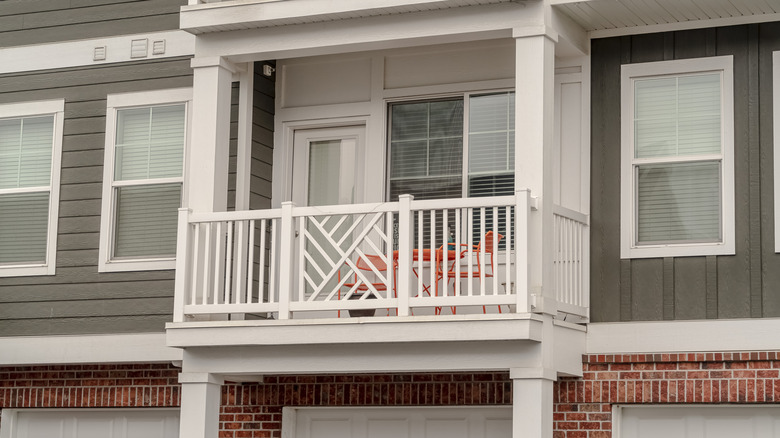How To Use Planter Boxes To Create A Simple Privacy Wall For A Deck Or Balcony Railing
We may receive a commission on purchases made from links.
When you live in an apartment building, you may adore your neighbors at the community barbecue but detest that they can see right in through your sliding glass patio door. (Blame this on the poor construction planning which put their bedroom window directly across from your balcony or deck.) The solution to this dilemma, according to TikToker @the_avantgarde, is to put some hanging garden boxes containing ornamental grasses on the deck rail to create a living privacy fence.
To get this project going, you'll need to buy a couple of hanging garden boxes, like the ones from Outsunny Store, though you're not limited to that style. You'll also need a screwdriver or a wrench to put the hangers on the boxes and a couple of ornamental grasses, such as pampas grass, in pots. One of the advantages of ornamental grasses is that they're tall enough to provide you with coverage to block the neighbors' view without obstructing your own views too much. Be sure to have a small hand shovel to help with the planting, too.
Finally, depending on how long the garden boxes are, you'll probably need between two and five potted plants for each box. Potting soil and some packing material, like acorns or pea gravel, to encourage drainage are required for this project as well.
Putting together your planter box fence
Start your task by prepping the hanging garden boxes. Many garden boxes are designed to be something you can either hang up or leave on the ground. Because of this, the hooks that allow you to attach the boxes to a fence or a deck railing need to be fastened on. Most planter box kits come with made-to-fit hooks and a set of matching screws and bolts. Once you locate those, screw the hooks onto the boxes and tighten the bolts.
Next, add your potting soil, leaving enough room for each of the plants to fit in the soil and still have some space between plants. Depending on the kind of grass you plant, the space requirements between each plant can vary, so follow the instructions that come with the plants you choose. Lastly, dig spots in the soil to accommodate your plants. Make the holes deep enough to keep the plants rooted in the soil. (If your deck gets a lot of wind, the plants will need deep roots to create an ornamental grass windbreak.)
Customizing the planter wall
Variety is the spice of life, as the saying goes, and that's also true when you're planting ornamental plants. As such, consider mixing up the varieties you get. For example, you could plant three pampas grass plants and two EverColor Everillo Carex, with the pampas grass plants being the first, third, and fifth positions. This setup encourages visual interest and variety.
If you go with more than one type of ornamental grass, check to make sure that the plants in question can flourish in the same grow zones. In the example above, there is some overlap in the grow zones for both plants, so these should be compatible. You'll also want to ensure that the plants will grow to be roughly the same height to give you even coverage all around.
Additionally, there may be some gaps between the hanger boxes that are caused by architectural features, like support posts between fence sections. If you want light privacy cover, leave the arrangement as is. However, if you'd like more coverage, consider placing small ornamental trees in pots in front of these architectural features. Something like a Japanese maple or a patio peach tree would add pops of color and be compatible from a grow zone standpoint. Potted trees also have the potential to grow to be about the same height as your potted grasses, which keeps the lines of sight interesting but still fairly even from a coverage perspective.

